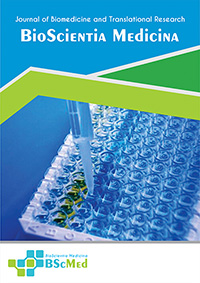Main Article Content
Abstract
Background: Complex iatrogenic bile duct injuries (BDIs) are formidable surgical challenges, with Roux-en-Y hepaticojejunostomy (RYHJ) being the standard reconstruction. However, RYHJ permanently alters gastrointestinal physiology and is associated with significant long-term morbidity. This has prompted a search for physiology-preserving alternatives. We describe a novel technique using a tubularized autologous parietal peritoneal graft for biliary reconstruction.
Case presentation: This report details the successful management of two patients with high-grade, post-cholecystectomy BDIs (Strasberg-Bismuth Type E1 and E3). Both patients presented with obstructive jaundice and controlled biliary fistulae. Definitive single-stage reconstruction was performed. A segment of parietal peritoneum was harvested, tubularized over a T-tube to create an interposition conduit, and anastomosed to bridge the biliary defect. The repair was reinforced with a pedicled omental flap. Both patients demonstrated complete resolution of jaundice and normalization of liver function tests, with radiological evidence of graft patency and no stricture at 12-month follow-up.
Conclusion: This preliminary experience in two patients suggests that the use of a tubularized autologous parietal peritoneal graft is a surgically feasible technique for the reconstruction of complex BDIs. This approach offers a potential physiology-preserving alternative to traditional bilioenteric anastomosis. Its safety, efficacy, and long-term durability remain unknown and require rigorous evaluation in larger prospective studies.
Keywords
Article Details
As our aim is to disseminate original research article, hence the publishing right is a necessary one. The publishing right is needed in order to reach the agreement between the author and publisher. As the journal is fully open access, the authors will sign an exclusive license agreement.
The authors have the right to:
- Share their article in the same ways permitted to third parties under the relevant user license.
- Retain copyright, patent, trademark and other intellectual property rights including research data.
- Proper attribution and credit for the published work.
For the open access article, the publisher is granted to the following right.
- The non-exclusive right to publish the article and grant right to others.
- For the published article, the publisher applied for the Creative Commons Attribution-NonCommercial-ShareAlike 4.0 International License.





